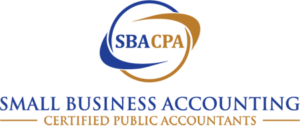Risk Mitigation and Compliance
It's estimated that employees steal $50 billion from businesses in the United States each year. One of the biggest risks small businesses face is internal fraud committed by employees. A Virtual CFO, operating outside your business, mitigates both internal and external risks. We'll establish systems and processes to reduce opportunities for internal fraud, while also assisting your business to remain up-to-date and in compliance with local, state, and federal regulations.
Why Risk Mitigation Should Be One of Your Top Priorities
Small businesses and privately owned businesses are at the highest risk of suffering losses due to internal fraud. On average, businesses lose 5% of gross revenue every year to fraud, and small or privately owned businesses suffer median annual losses of $164,000. The reason for such great losses and higher frequency in small and private businesses is that they typically do not have the proper tools, training, or means to implement adequate controls and sound processes within their financial departments.
Yes, Employee Fraud Could Happen to You, Too
Lots of small business owners and CEOs operate under the misconception that they're too small to be at risk of fraud. As a result, they often leave their business's assets in extremely vulnerable positions. They tend to work closely with whoever has been placed in charge of the back office, usually a part-time bookkeeper or another employee. As a result, they develop relationships and wind up trusting their employees more than they should. Even people whom you believe to be good are capable of committing internal fraud and employee theft.
Unfortunately, for these reasons, in addition to the general lack of training and awareness, internal fraud is highly likely in small and privately owned businesses.
What Types of Fraud Occur in Small Businesses?
Small businesses can be targets of external fraud, but most frequently they fall prey to internal schemes. In small businesses, corruption is the most common type of fraud scheme, in 32% of businesses with fewer than 100 employees and 43% frequency in businesses with over 100 employees. With 29% frequency, billing schemes are the second-most commonly occurring fraud in businesses with fewer than 100 employees.
Small businesses also suffer losses due to:
- Wire transfer fraud
- Financial statement fraud
- Check to tamper
- Register disbursements
- Expense reimbursement schemes
- Cash larceny
- Payroll fraud
- Inventory theft
How Is Internal Fraud Detected?
On average, fraud goes undetected for about two years, if it's ever detected. Often fraud is stumbled upon by accident, due to uncharacteristic employee behavior, or it might be detected in an internal audit or external audit. Sometimes, in proactive businesses, dishonest activities are uncovered based on an anonymous tip from another employee.
How Is Employee Fraud Prevented?
The best way to handle internal fraud is to prevent it from occurring in the first place. You can do this by implementing and enforcing sound policies and procedures for employees who have any access to your business's finances, bank statements, checks, receivables, and/or cash. This includes all of your bookkeepers, accountants, and anyone who handles cash in your business.
To prevent fraud and theft, it's essential that you establish sound dual control and balancing procedures, along with plenty of checks and balances. Having these types of operational rules in place will ensure that any fraud attempts are swiftly detected. They'll also make it more difficult for employees to attempt committing fraud or to try to steal from the company.
Risk Mitigation with a Virtual CFO
Risk mitigation is typically the responsibility of a controller, but small businesses rarely have the resources to hire one full-time. With a Virtual CFO, your business will enjoy the benefits of a controller, while also having an outsourced employee available to implement checks and balances and audits from a remote and objective position.
